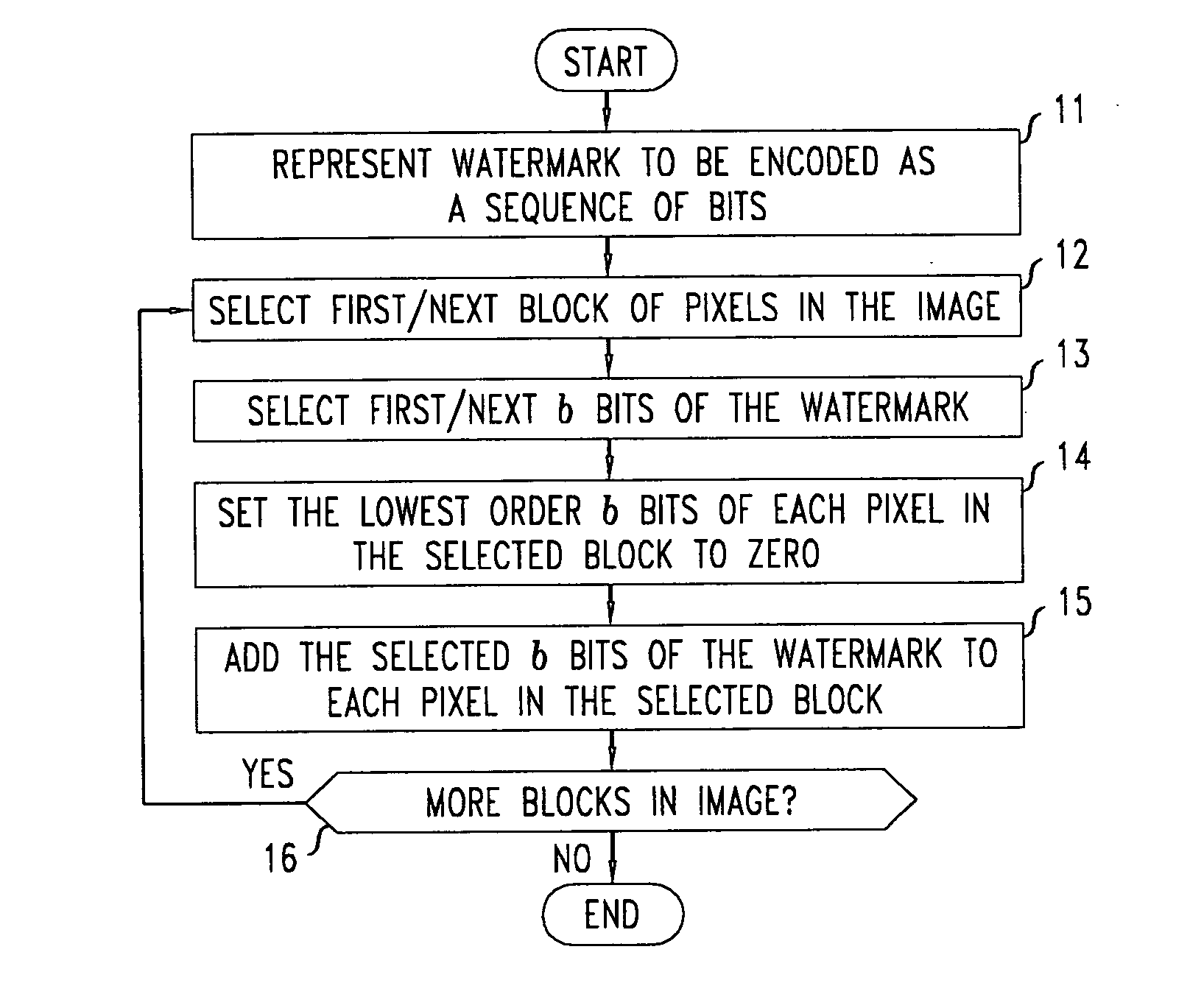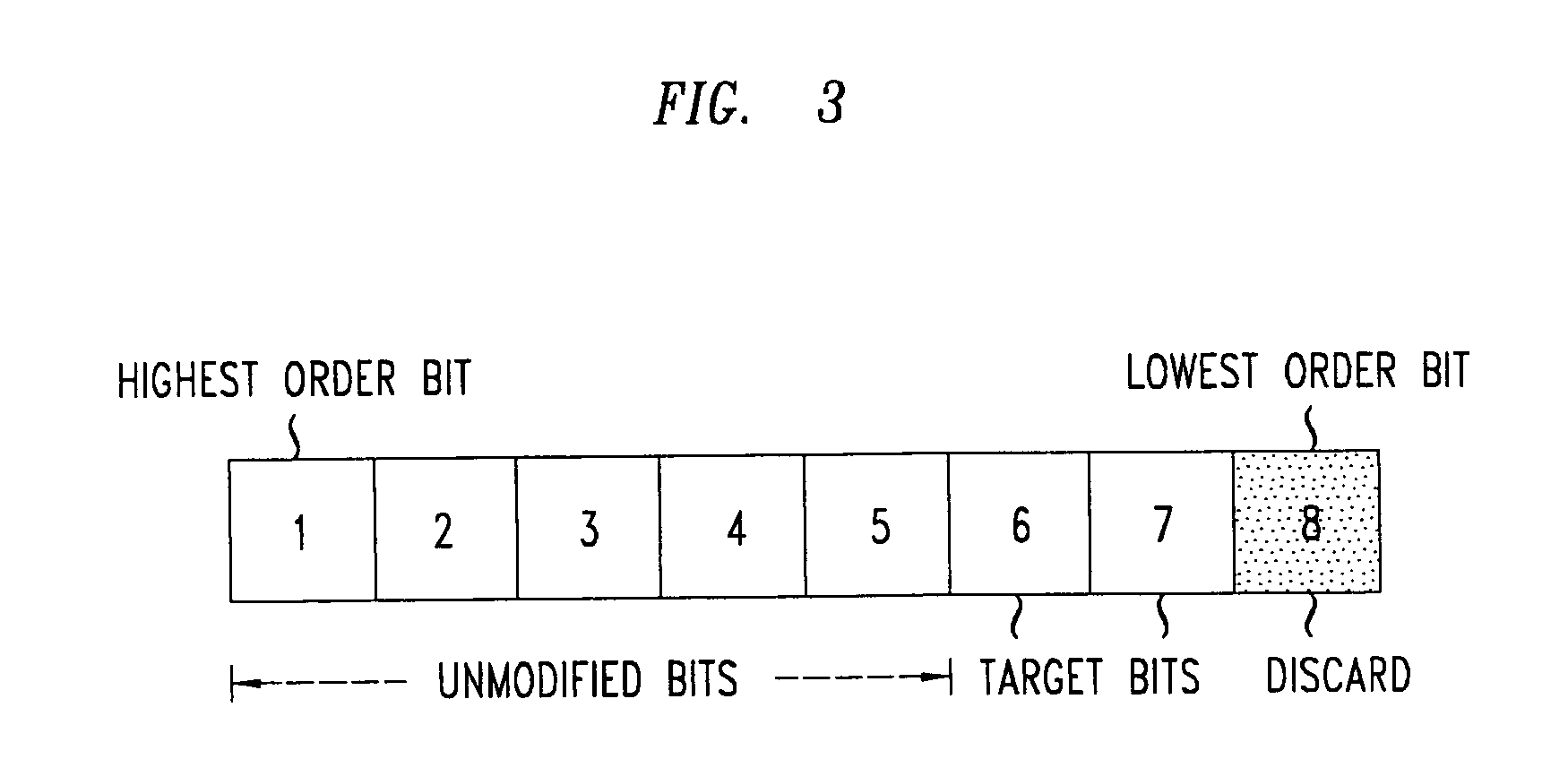Method for performing recoverable video and image watermarking which survives block-based video and image compression
- Summary
- Abstract
- Description
- Claims
- Application Information
AI Technical Summary
Benefits of technology
Problems solved by technology
Method used
Image
Examples
Embodiment Construction
[0012] Suppose that a video camera could watermark frames of a movie. On a 640 pixel by 480 pixel resolution shot, there are (640 / 16)*(480 / 16)=1200 blocks per frame, assuming that the blocks are 16 pixels by 16 pixels. If just a single bit is used per block, this allows 1200 bits (e.g., 150 bytes) of watermark information that can be encoded on a single frame. Note, for example, that this is a sufficient bit rate for uniquely marking every frame from a particular distributor. For example, the ISO 8601 standard, which is fully familiar to those of ordinary skill in the art, defines a date and time format that fully specifies time from a four digit year to fractions of a second in 25 bytes. (Although the 25 bytes specified by the ISO 8601 standard format could easily be reduced without loss of information, when the information is simply represented as a standard ASCII text string it requires 25 bytes.) By assigning a MAC (Media Access Controller) address to the device, 12 bytes could ...
PUM
 Login to View More
Login to View More Abstract
Description
Claims
Application Information
 Login to View More
Login to View More - Generate Ideas
- Intellectual Property
- Life Sciences
- Materials
- Tech Scout
- Unparalleled Data Quality
- Higher Quality Content
- 60% Fewer Hallucinations
Browse by: Latest US Patents, China's latest patents, Technical Efficacy Thesaurus, Application Domain, Technology Topic, Popular Technical Reports.
© 2025 PatSnap. All rights reserved.Legal|Privacy policy|Modern Slavery Act Transparency Statement|Sitemap|About US| Contact US: help@patsnap.com



